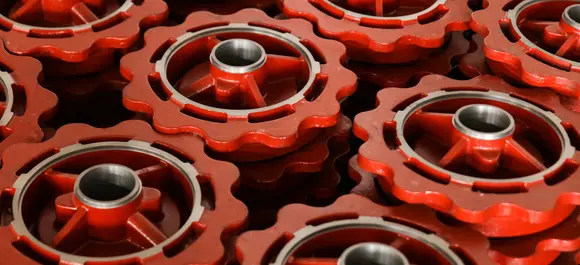Mobile:+86-311-808-126-83
Email:info@ydcastings.com
stainless steel casting foundry
The Importance of Stainless Steel Casting Foundries
Stainless steel casting foundries play a pivotal role in various industries, providing essential components that meet stringent engineering and aesthetic standards. The process of stainless steel casting involves pouring molten stainless steel into molds to create a wide range of products, from intricate components in aerospace applications to everyday kitchen utensils. This article delves into the significance of stainless steel casting foundries, the benefits of stainless steel, and the processes involved in casting.
Understanding Stainless Steel
Stainless steel is an alloy composed primarily of iron, along with a minimum of 10.5% chromium, which gives it remarkable resistance to corrosion. Other elements such as nickel and molybdenum may also be added to enhance its properties further. This unique composition not only makes stainless steel strong and durable but also allows it to maintain its appearance and functionality over time, even in harsh environments. Its versatility makes it a preferred material in numerous industries, including automotive, aerospace, food and beverage, and medical.
The Casting Process
The stainless steel casting process typically involves several steps, starting with the preparation of the mold. Molds are usually made from sand, metal, or ceramic materials, depending on the complexity of the part being produced. The chosen mold is heated to endure the high temperatures of molten stainless steel, which generally ranges between 2600°F and 2800°F (1430°C to 1540°C).
Once the mold is ready, the molten stainless steel is poured into it. This process must be carefully controlled to avoid defects such as air pockets or inclusions, which could compromise the integrity of the finished product. After the steel cools and solidifies, the mold is removed to reveal the casting. Subsequent processes such as grinding, machining, and polishing ensure that the final product meets the exact specifications required by clients.
Advantages of Stainless Steel Casting
stainless steel casting foundry

1. Corrosion Resistance One of the most significant advantages of stainless steel is its ability to resist rust and corrosion. This makes it ideal for use in environments exposed to moisture and chemicals, such as marine and medical applications.
2. Strength and Durability Stainless steel castings can withstand extreme conditions, including high temperatures and heavy loads. This makes them suitable for critical components in machinery and infrastructure.
3. Design Flexibility The casting process allows for the creation of complex shapes and sizes, which is essential in industries where custom components are required. Manufacturers can produce intricate designs that would be challenging to achieve with other manufacturing methods.
4. Aesthetic Appeal Stainless steel offers a modern and sleek appearance, which is desirable in consumer products and architectural applications. Its ability to maintain its luster over time makes it a popular choice for items that are on display.
5. Cost-Effectiveness While the initial investment in stainless steel may be higher than other materials, its longevity and low maintenance requirements often lead to lower overall costs in the long run.
Conclusion
Stainless steel casting foundries are integral to the manufacturing landscape, providing a wide array of components that meet the needs of various industries. The unique properties of stainless steel, combined with the versatility of the casting process, ensure that manufacturers can produce high-quality products that stand the test of time. As industries continue to evolve, the role of stainless steel casting foundries will remain critical in promoting innovation and efficiency across multiple sectors. The future of stainless steel casting looks bright, promising further advancements in technology and material science that will enhance the capabilities of foundries and broaden the application range of stainless steel products.











